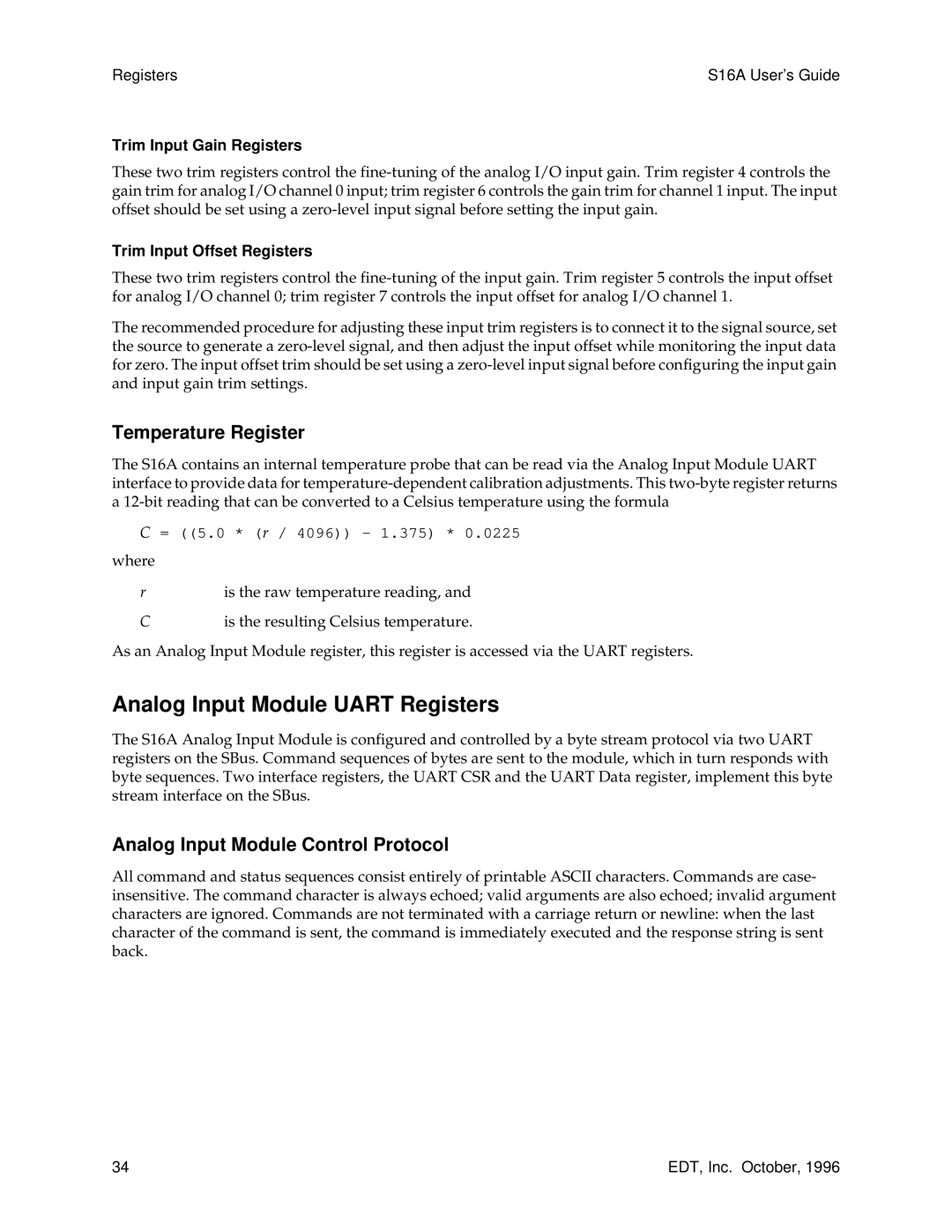Registers | S16A User’s Guide |
Trim Input Gain Registers
These two trim registers control the
Trim Input Offset Registers
These two trim registers control the
The recommended procedure for adjusting these input trim registers is to connect it to the signal source, set the source to generate a
Temperature Register
The S16A contains an internal temperature probe that can be read via the Analog Input Module UART interface to provide data for
C = ((5.0 * (r / 4096)) - 1.375) * 0.0225
where
ris the raw temperature reading, and
Cis the resulting Celsius temperature.
As an Analog Input Module register, this register is accessed via the UART registers.
Analog Input Module UART Registers
The S16A Analog Input Module is configured and controlled by a byte stream protocol via two UART registers on the SBus. Command sequences of bytes are sent to the module, which in turn responds with byte sequences. Two interface registers, the UART CSR and the UART Data register, implement this byte stream interface on the SBus.
Analog Input Module Control Protocol
All command and status sequences consist entirely of printable ASCII characters. Commands are case- insensitive. The command character is always echoed; valid arguments are also echoed; invalid argument characters are ignored. Commands are not terminated with a carriage return or newline: when the last character of the command is sent, the command is immediately executed and the response string is sent back.
34 | EDT, Inc. October, 1996 |
